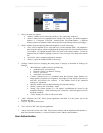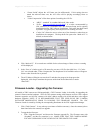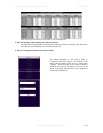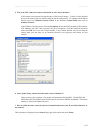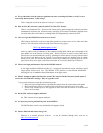Megapixel Cameras and Surveillance Software User Manual
CBC (America) Proprietary Information p.33
Troubleshooting and Useful Tips
Connecting Directly To Laptop or PC
In a typical scenario cameras are connected using network cables to a network switch. A camera
can also be connected to a PC or laptop directly. Be sure to use a cross-over network cable
between the camera and PC when connecting in this fashion.
When a camera is connected directly, in some cases you may need to change TCP/IP configuration
on your PC. For example, configure the PC to work with a static IP address.
When a PoE injector is used and connected directly to a PC there are two network cables. One
cable connects the PC to the PoE injector. The other connects the injector to the camera. Only one
of these cables must be cross-over. The other cable must be regular, not cross-over.
Note: MP8D cameras require a higher PoE power class (Class 3: from 6.49 to 12.95 Watt) than
other CBC camera models.
Switches and Routers
Note that some Gigabit switches and network adapters incompletely emulate 100BaseT signaling
levels and may not work correctly with high bandwidth 100BaseT equipment.
Low Sharpness
If the image sharpness appears to be low:
• Check if the lens is in focus.
• Check if the lens is appropriate for a mega-pixel camera.
• Under Image Quality menu decrease compression and increase sharpness.
• Check if the lens iris is fully open or closed down too much. For best resolution and
depth of field the iris (depending on lens make and model) should be closed by 2-3 F-
stops.
Frequently Asked Questions
1. What type of video compression is used in CBC cameras?
CBC cameras use MJPEG - Motion JPEG.
2. How much storage space is required when using CBC cameras?
The storage space requirements will vary depending on how compressible your imagery will be.
Shown below is an example of a system running at 22 FPS. However, the user can specify the
archival frequency to be lower than the full frame rate. Most CBC cameras also provide highly
sophisticated on-board motion detection. To further reduce the required storage the user has an
option to archive only those images that contain the motion. Furthermore, CBC cameras support
real-time resolution changes and image windowing on a frame-by-frame basis. The user may wish
to archive windows of interest or reduced resolution images at the high frame rate while archiving
full resolution images at the lower frame rate.





